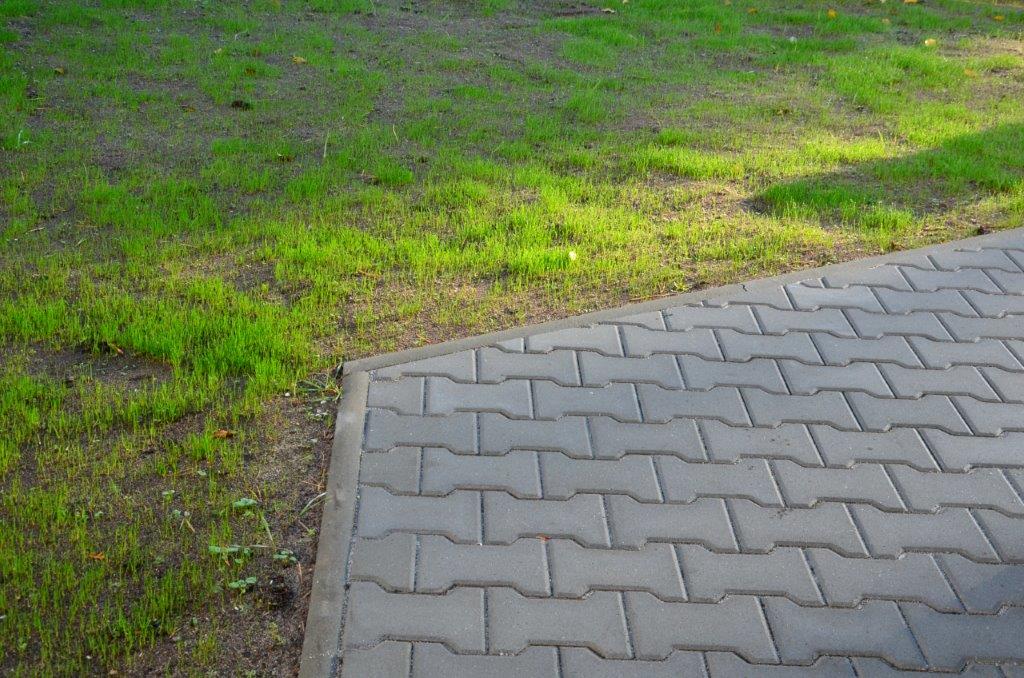Sowing lawn seed in Spring - The cost effective way of establishing a lawn
Author: Stefan Palm Date Posted: 16 October 2023
With cost of living pressures hitting hard, establishing a lawn by seed is a great alternative to rolling out turf. It's by far the cheapest way to get yourself a new lawn, and it’s a whole lot easier than you think!
The early start to Spring this year saw soil temperatures rise fairly quickly, and they are at the stage now where they are ideal for germinating lawn seed. Timing is important because the soil needs to be at a minimum temperature for most seed types to germinate, especially when it comes to warm-season varieties such as couch and kikuyu. Spring weather has the best of both worlds – Good amounts of rain and, of course, mild warmth without the extreme temperatures of Summer. 
What varieties are available?
There are not as many varieties of seed as there are varieties of turf; however, there is still plenty to choose from, the most popular types being Bermuda Couch, Kikuyu, tall fescue, rye, blue and bent grass. You can buy these as pure varieties or as blended combinations. Kikuyu seed is often blended with fescue, and couch seed is often blended with ryegrass. These combinations complement each other and ensure fast germination and even coverage.
The most drought-tolerant varieties are couch and kikuyu, and these are the types I'd recommend, especially considering the warmer conditions we're likely to experience this Summer. Have a look at the following varieties for ideas and budget setting:
- Kikuyu / tall fescue blend
- Kikuyu (Pure 100% Kikuyu)
- Pedigree Couch (USA Fancy couch / Fine Leaf Rye blend)
- USA Fancy Couch (Pure 100% couch)
Have a look at our handy comparison chart to compare the features of different varieties
How much will it cost?
Seed is typically less than 10% of the cost of instant turf. Expect to pay around $20-30 for enough see to cover 25 square metres. To do the same area in roll-out turf will cost $250-$350, depending on the variety, so seed represents a considerable saving.
What can you expect?
Expect to lightly water. The most critical element to sowing a lawn is water – you don’t have to water for long periods, but you do have to water at regular intervals throughout the day during the germination period. If your seed begins to germinate and then dries out, it will most probably die. It’s the leading cause of seed failure. When this happens, it’s easy to think to yourself, “I must have had a bad batch of seed”. Almost all the seed that comes into Australia comes from the USA and is certified by the Australian Government to have a minimum purity and germination, meaning that is very unlikely that you’re going to buy dud seed. If it doesn’t germinate, in most cases, it was either too cold, or it didn’t get watered frequently enough, so keep that in mind when you’re planning to sow seed. If you're not home during the day, invest in a simple, automated tap timer to turn the sprinkler on when you're out.
Expect some weeds. When you fertilise the soil and then add lawn seed and water, you not only create ideal conditions for lawn seed to germinate, but you're also making it perfect for weed seeds too. If weeds germinate, you can hand-pull them but don't apply any herbicides for at least 8 weeks after sowing.
Expect to oversow. When sowing seed, you will most likely need to oversow at the 6-week mark. This is because some won't germinate, some will get eaten by birds, and ants will carry their share away too. Resist the urge to oversow within six weeks, as you'll be surprised how much it thickens up as it starts to mature.
How to sow lawn seed:
Sowing seed isn’t complicated. If you sow seed now, you can expect to have a mature lawn before Christmas. Generally speaking, the warmer the weather, the more frequently you have to water. The minimum is twice per day however, when you get into the mid-’20s, then an additional water in the middle of the day is essential. Once the temperature hits the 30’s, then 4 times per day is required. I probably wouldn’t attempt sowing seed in the high 30s – you’d be out there all day watering! The idea is not to let the seed dry out, which shouldn't be hard given all the wet, mild weather we've been getting lately! Applying the rule of common sense, daytime rain can substitute for some or all of this watering.
Germination times range from 7-10 days for a ryegrass to 3 weeks for a kikuyu, which means you need to keep up this watering intensity for at least 2-3 weeks.
We’ve created some handy resources to walk you through the steps involved in sowing a lawn. Click here for more info, or watch the video below:
